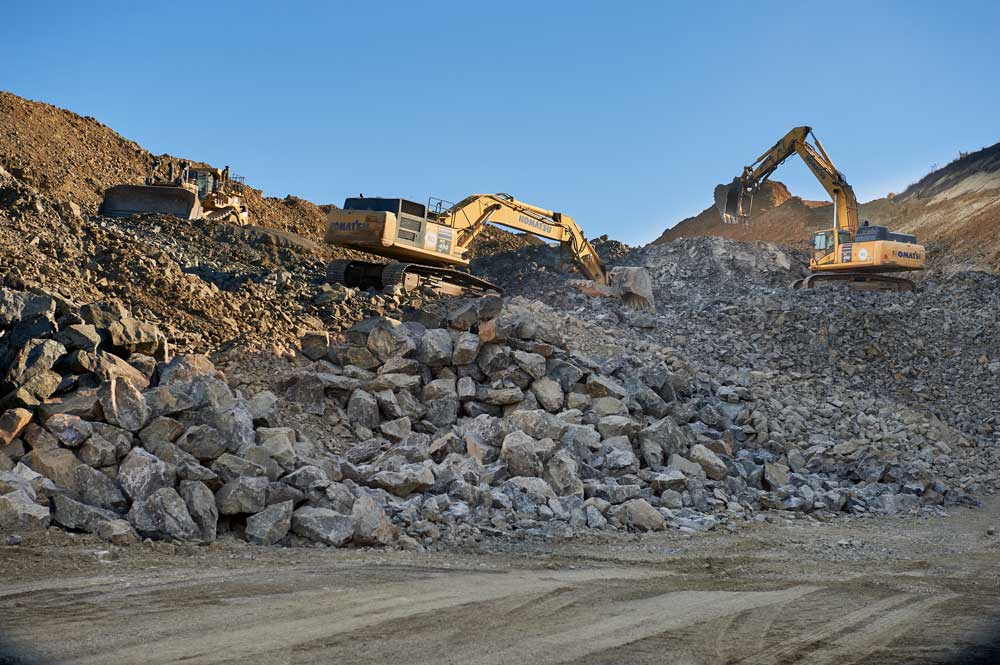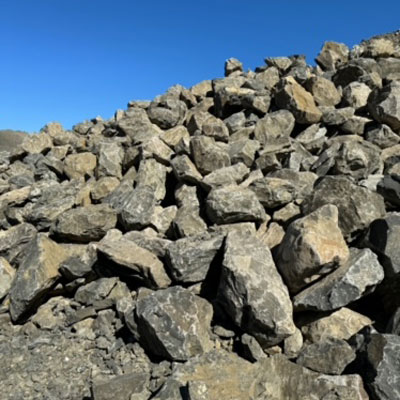You’re stabilizing a steep drainage channel with high-flow velocities, but the rip rap you specified is undersized. Weeks later, sections start to fail—rocks shift, erosion creeps in, and repairs halt progress.
For engineers, inspectors, and contractors, choosing the right rip rap size is important not only for meeting specs but also for preventing costly rework, safety hazards, and structural damage.
Understanding Rip Rap Sizing: What the Classes Really Mean
Getting rip rap sizing right starts with knowing what each class actually represents. Each size plays a specific role in managing flow conditions, stabilizing slopes, and protecting exposed surfaces.
Rip Rap Classification Systems
Rip rap follows classification systems that group rock by weight, diameter, and gradation. You often work with standards defined by agencies like Caltrans and the American Society for Testing and Materials (ASTM).
For example, Class 1 rip rap generally consists of rocks 6 to 12 inches in diameter, while Class 2 rip rap includes material ranging from 12 to 18 inches. These classifications help match material with site-specific hydraulic and structural requirements.
Why Sizing Accuracy Matters in Water Flow and Slope Angles
Properly selecting rip rap sizes is critical for preventing displacement and erosion and maintaining structural integrity under changing hydraulic loads. Water velocity and slope angle directly affect how well the material protects a surface.
If you use rock that is too small, it may wash away. If it is too large, it can reduce interlocking and affect stability. On steep grades or curved profiles, overly large material may shift or create gaps that expose soil.
Overview of ASTM/Caltrans Specs
ASTM D6825 offers general guidance for rip rap size selection based on flow velocity, channel
slope, and shear stress. Meanwhile, Caltrans Standard Specifications Section 72 provides detailed gradation specifications. It defines rip rap classes by minimum and maximum rock sizes, percent passing by weight, and specified gradations.
Both standards aim to support hydraulic stability and achieve proper interlock in erosion control applications.

Matching Rip Rap Size to Application Type
There are various factors you need to consider when dealing with rip rap sizing. You need to match it to the specific application while accounting for slope, flow, material volume, and placement cost.
D50 and D100
D50 rip rap refers to the median rock diameter in a graded mix, meaning 50% of the rock by weight is smaller than this size. D100 is the maximum rock size, often about 1.5 to 2 times the D50.
Rip rap grading uses these values and gradation curves to meet hydraulic demands. This sizing approach helps you control lift thickness, material consistency, and the ability of the angular rock to resist movement under flow.
Matching Slope Gradient and Expected Flow to the Correct Size
Higher slopes and flow velocities require larger rocks. For instance, channels with velocities exceeding 3 m/s often call for rip rap with a D50 of 450 mm or more.
Engineers use slope-velocity charts from the Federal Highway Administration’s (FHWA) Hydraulic Engineering Circular No. 11 (HEC‑11) to select rock sizes that resist hydraulic shear.
Balancing Size, Placement Cost, and Volume
Larger rip rap provides higher stability but raises placement costs. You must weigh the hydraulic demands against equipment limitations and budget. Oversized rock adds volume and weight, which can raise transport, staging, and labor needs.
Integrating screened chips into the gradation profile can lower overall material volume while maintaining structural integrity. Meanwhile, smaller gradations may save on cost but risk displacement if undersized.
Shoreline and Slope Use Cases: When to Scale Up
Steep slopes, fast-flowing channels, coastal shorelines, and culverts each demand carefully selected rip rap sizes. As flow intensity, slope angle, or wave impact increases, you need larger and heavier material to maintain stability and prevent erosion.
Why Steep Slopes and High-Energy Environments Require Heavier Sizes
In high-energy conditions, such as fast-moving rivers or exposed coasts, large rip rap offers greater stability by resisting displacement. In steep or high-velocity zones, stone weights averaging around 1 ton per piece have been shown to effectively withstand extreme flow events.
Using Rip Rap for Long-Term Stabilization vs. Short-Term Erosion Fixes
Durable and high-quality material is essential when strengthening structures with rip rap.
For long-term rock slope protection, select large, angular stone with higher D50 values. In contrast, short-term erosion fixes might use smaller sizes that are quicker to place but less durable.
Considerations for Road Embankments, Culverts, and Coastal Zones
Use larger rocks for coastal zones where shoreline stabilization depends on withstanding tidal forces and wave impact. In road embankments and culverts, sizing varies based on expected flow and slope.
How Sizing Affects Installation and Equipment Needs
The rip rap size you choose directly influences the equipment, crew coordination, and safety measures needed to complete the job efficiently and safely.
Larger Rock: Different Delivery, Placement, and Labor
When working with large rip rap dimensions, you must account for heavier loads that affect transport, handling, and labor. Larger rock increases delivery costs and requires additional crew for placement. You may also need staging areas close to the application zone to minimize lift distance and handling time. Improper planning can delay installation and strain your budget.
Excavator and Grading Logistics
Handling large revetment rock requires excavators with higher lift capacity and sufficient reach to place heavy stones without damaging geotextiles or disturbing slope geometry. Additionally, a stable and well-compacted foundation using base rock reduces surface irregularities and supports uniform placement.
Grading becomes more complex on steep embankments, where fine shaping is difficult with oversized material. That’s why proper timing and coordination between your hauling, grading, and placement crews matter.
Safety Considerations With Irregular Loads
Irregular-shaped stones pose safety risks during load handling and placement. You must tightly secure rock bundles, avoid excessive stacking, deploy trained spotters, and equip crews with high-visibility personal protective equipment (PPE) and communication systems and protocols.

Ask Your Supplier: Getting the Right Size and Grade for Your Specs
Even if you know the right rip rap sizes for your project, it means little without a supplier who truly understands your specs and can deliver the right material, on time, and without compromise.
Questions to Ask to Ensure Spec Compliance
Before placing an order, ask the supplier the right questions. Do the rip rap sizes match your project specs? What is the D50? Are the stones classified by weight, such as ½ ton, or by diameter?
You’ll want clear details on angular rock gradation, maximum stone size, specific gravity, and fractured faces—all of which are critical to performance and compliance.
Confirming Stock, Delivery Lead Times, and Test Reports
Don’t leave critical details up in the air. Ask what’s currently in stock, how soon it can be delivered, and if they can share up-to-date lab reports. Look for detailed gradation curves, durability test results, and QA documentation. These details give you the confidence to stay on schedule, reduce risks, and back up your specs during inspections.
The Benefit of Sourcing From Experienced Rip Rap Producers
Working with a trusted supplier means less guesswork and saves you time and risk. You get consistent quality, on-time delivery, and rock-solid documentation backed by real expertise.
At Roblar Quarry, we bring more than just rock. We provide erosion-control expertise, reliable materials, and responsive technical support. With us, you don’t just receive the correct rip rap sizes. You gain peace of mind knowing every load meets specs, holds up in the field, and keeps your project on track.
